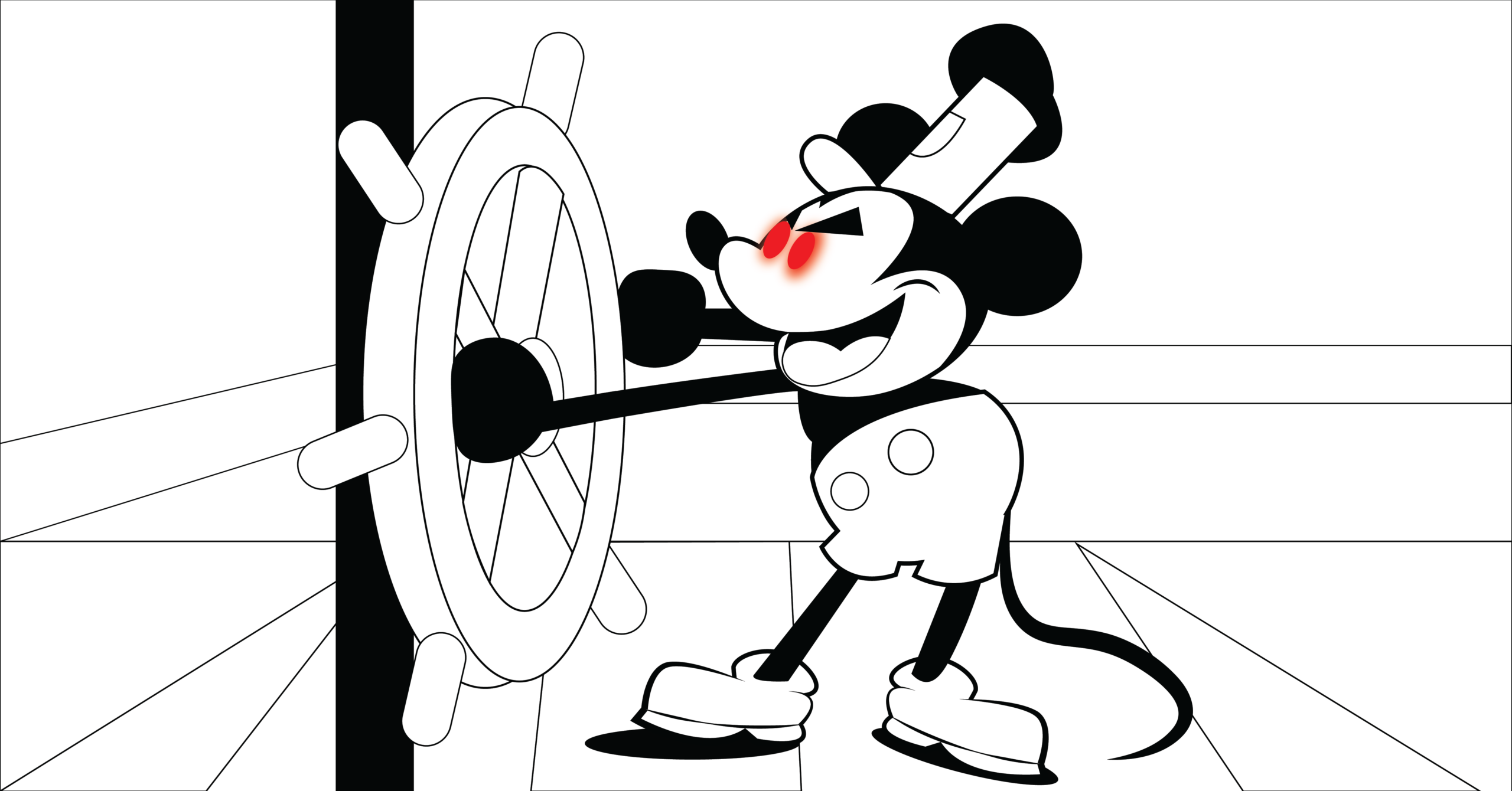Mickey Mouse enters the public domain after 95 years
Disney’s copyright protection of Mickey Mouse has just expired, and some surprising depictions of the character may be on the way.
Ever since he breezed onto the screen in the 1928 cartoon Steamboat Willie, Mickey Mouse has been a cornerstone of the Walt Disney Company’s products. Everything from the giant-eared silhouette of his head to his carefree whistling are set-in-stone Disney trademarks. At the time of his debut, the Copyright Act of 1909 only allowed studios a 28-year-long protection period for their intellectual property. However, following several lobbying efforts across the decades, Disney extended this term to the end of 2023—a staggering 95 years since the character’s first on-screen appearance.
Disney’s efforts to maintain a vice-like grip on their rights to Mickey have been met with some indignation. Disney films have repeatedly profited off materials whose copyright has either lapsed or never existed. Everything from Hans Christian Andersen tales like Cinderella to hints of William Shakespeare’s Hamlet in The Lion King demonstrates Disney’s success with drawing ideas from the public domain. They are a clear advocate of this practice, but they’ve also lobbied time and again to protect Mickey from external use. The irony of the situation makes Mickey’s entrance into the public domain a pivotal moment in film culture.
Creators can now use Mickey Mouse in any medium without getting permission from Disney. Artists and performers are no longer at risk of being sued or demonetized should they be possessed by the unshakeable urge to write Mickey into their next piece. These works won’t be regulated by Disney, nor do they need to abide by the family-friendly guidelines typically associated with the character.
A horror-comedy film inspired by Steamboat Willie has just been reported, with Steven LaMorte set to direct. The film will depict Mickey terrorizing ferry passengers—a notable departure from the cheeky, optimistic mouse we’re all familiar with. The announcement came only weeks after Mickey’s entrance into the public domain, and this is no doubt a testament to how eager artists are to put their own spin on the iconic character.
A similar trend was seen in 2022 with the announcement of Winnie the Pooh: Blood and Honey. Shortly after Winnie the Pooh entered the public domain, British filmmaker Rhys-Frake Waterfield announced a horror film featuring Pooh and Piglet as brutal murderers. The movie was released in 2023, and despite a dismal three per cent score on Rotten Tomatoes, it was a financial success, grossing more than US$5 million against its US$100,000 budget. The film’s popularity—despite its poor quality—demonstrates the enthusiasm with which audiences receive radical new works featuring formerly untouchable characters.
With all the buzz surrounding Mickey’s release from Disney’s copyright domain, it’s important to keep several regulations in mind. Only the version seen in Steamboat Willie is up for grabs. So, if you were hoping to make a film featuring Mickey Mouse with red shorts and pupils, be prepared to wait a few decades—those later renditions are still under trademark.
Until Mickey can march into the public domain scene in all his tail-less, yellow-shoed glory, creators still have plenty to work with. For the first time in almost a century, black-and-white Mickey Mouse can be twisted, reshaped, and updated in any manner of an artist’s choosing. He is now a mutable character; a figure onto which the new generation can project its experimental—perhaps shocking—new ideas.

